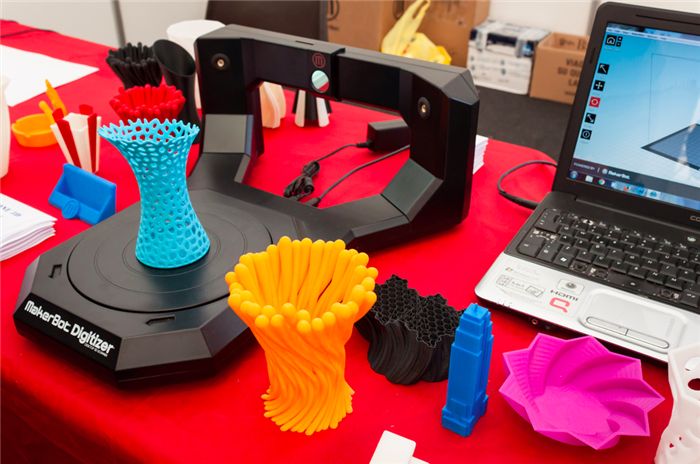Contents
Starting Your Journey as an Inventor and Bringing Your Ideas to Market
Are you eager to become an inventor and see your ideas come to life? If so, you’re in the right place. In today’s highly innovative world, there are countless opportunities to create and launch new products. However, it’s crucial to understand the steps involved in turning your vision into a marketable reality. By following these guidelines, you can set yourself up for success.
Firstly, it’s essential to have a clear and well-defined idea. Take the time to brainstorm and identify what problem your invention solves or what need it fulfills. This initial step is the foundation for everything that follows, so make sure to give it the attention it deserves.
Next, conduct thorough research to assess the market potential of your idea. This involves understanding the target audience, identifying existing competitors, and determining if there is a demand for your product. By gathering this information, you can ensure that your invention has a place in the market and validate the viability of your concept.
Once you have a solid idea and market research in hand, it’s time to create a prototype. Prototyping allows you to bring your concept to life and test its functionality. Start with a simple model and iterate as needed to refine your design. You can utilize various tools and technologies, such as 3D printing, to create a proof-of-concept prototype efficiently.
After developing a prototype, it’s crucial to protect your invention. Consider filing for intellectual property rights, such as patents, trademarks, or copyrights, to safeguard your idea from being copied or stolen. This step provides you with legal protection and strengthens your position as you move forward in the commercialization process.
With a validated idea and protected intellectual property, it’s time to plan for production and commercialization. Determine the most suitable manufacturing method and identify potential suppliers or partners. Consider cost, scalability, and quality when selecting the right production strategy for your invention.
Additionally, a well-thought-out marketing strategy is essential to ensure the success of your product. Identify your target market, develop a branding identity, and create a marketing plan that encompasses both online and offline channels. This will help you effectively reach your audience and generate awareness and demand for your invention.
Finally, when your product is ready for market, consider various distribution channels to make it available to consumers. You may choose to sell directly through your website or through online marketplaces, or explore partnerships with retailers or distributors. Evaluating the best distribution options will depend on your product, target market, and business goals.
In conclusion, starting as an inventor and bringing your ideas to market requires careful planning and execution. By following these steps and remaining diligent throughout the process, you can increase the likelihood of success for your invention. Remember, converting an idea into a tangible and marketable product takes time, effort, and dedication. Embrace the journey and enjoy the fulfillment that comes from seeing your invention make a real impact in the world.
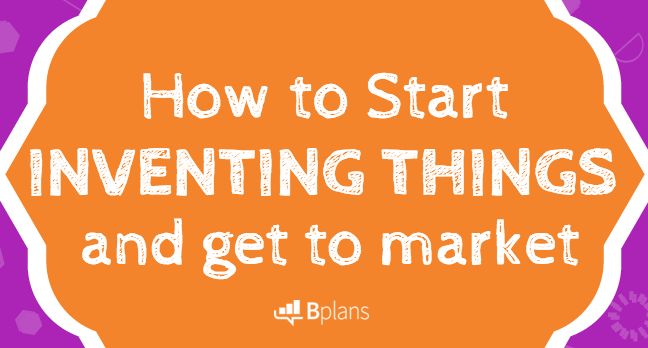
Everything you see around you—every item you own, every book you’ve read, every app you use, every website you browse—was once just an idea. That airplane thousands of miles above you. The memory foam pillow on your bed. The headache pills. The toothbrush. Your guitar. The internet. All of these things began as dreams.
The great thing about seeing the world as a library of ideas is that it proves that inventing is for everyone. If others can turn their dreams into reality, so can you.
However, when it comes to inventing things, the real trick is sticking to the journey from idea to invention to market. Thomas Edison said it best, “Genius is one percent inspiration and ninety-nine percent perspiration.”
So, if you have a genius idea, be prepared to put in the work. It’s not as hard as you think!
That’s where this guide comes in.
We’ll walk you through what you need to do to get your ideas to market and provide useful resources to help you learn everything you need to know. All you have to do is read, develop a good sense of focus (think essentialism, or one priority at a time), do your research, and test, test, test.
Here’s what the guide includes:
Step 1: Believe in yourself
Step 2: Find a problem worth solving
Step 3: Do basic market research (before investing money)
Step 4: Build and test your idea (in real life)
Step 5: Protect your idea
Step 6: Manufacture or license your idea
Resources for inventors
Step 1: Believe in yourself
Coming up with an idea or inventing a product takes commitment, dedication, and self-belief.
If you’re someone who gives up at the first “no” or is discouraged by negative feedback, you need to work on believing in yourself before sharing your idea with the world.
According to Jo Boaler, Professor of Mathematics Education at Stanford University, believing in yourself is important because the “growth mindset” that comes with it changes your brain chemistry. Cultivating a growth mindset and working hard can help your brain grow and change, making it easier for you to solve problems and find new solutions.
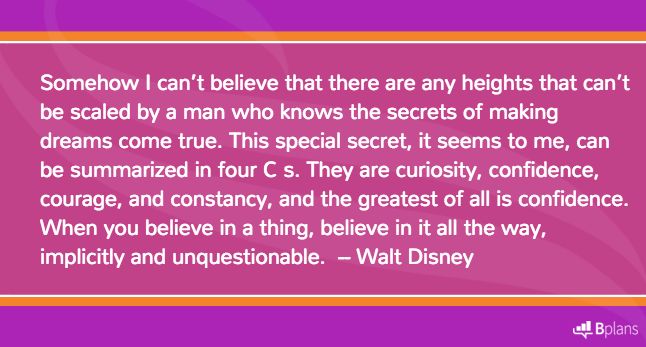
If that’s not enough to convince you to embrace self-help, every inventor I interviewed emphasized that being obsessed and persevering through the inventing process is crucial to bringing their idea or product to life.
Ken Beckstead, the creator of the Butts Only Box and a recycling company that converts cigarette waste into electricity, advises, "Never give up. Challenging times separate the achievers from the rest. You can watch the Simpsons, but only after completing your work for the day!"
With this in mind, let’s explore how to generate great ideas.
If you’re someone with ideas, you know that coming up with ideas isn’t the hard part. It’s seeing one through from vision to reality that’s the trial.
If you struggle to come up with ideas but still want to be an inventor, read our guide on how to come up with business ideas—it’s fool-proof.
Ultimately, inventing a product or coming up with an idea means solving a problem, whether it’s your own or someone else’s.
Here are some examples of problems and their solutions:
– Problem: dry skin. Solution: moisturizing skin cream.
– Problem: need to work at night in the dark. Solution: light bulbs, candles, flashlights.
– Problem: hairy clothes because you have a cat or dog. Solution: lint roller.
– Problem: can’t stop biting fingernails. Solution: horrible tasting nail polish.
– Problem: need to contact someone far away. Solution: telephone.
– Problem: boredom. Solution: board game.
You get the point. Where there’s a problem, there’s a solution.
The best part about inventing new things is figuring out which problems you’d most like to solve. If you can find a problem that hasn’t been solved, or a way to solve a problem better, you’ve hit upon something you may want to pursue.
Of course, you don’t have to solve a brand-new problem; you just have to come up with a solution that is all your own. If you want to invent a new solution to oily hair (shampoo), no one is stopping you.
The trick then is figuring out what your exact solution is, and whether or not there will be demand for it beyond just yourself, or whether or not you’ll be able to compete in an already-flooded market, like the shampoo market. We’ll talk more about this in step three.
To come up with a really great idea, all you need to start doing is tuning into your own frustrations, especially if you have a job, hobby, or pursuit that you’ve been doing for years. This sort of in-depth experience gives you unique insight into a particular industry.
Boris Wertz, founding partner of Version One Ventures, believes that if you’ve worked in an industry you’re passionate about for a long time, you may know something about the market that nobody else knows. He calls this “the secret of the market.”
Do you know a specific market’s secret?
For example, I’ve been making my own jewelry for years. Though I’ve been a hobby jeweler, I’m already deep in the marketplace. I know all the jewelry suppliers and what products and ideas are currently trending.
When I wanted to start making more professional metal jewelry, I started shopping for a jeweler’s workbench. I needed a desk that had features for quick access to tools; that was large enough for all my mixed media projects; and that was also sturdy enough it could take hammer blows and an occasional brush from a blow torch.
The most affordable jeweler’s workbench on the market at the time started at around $400. It was small and expensive. Rather than spending the money, I spent months looking for something larger and more affordable, something that simply didn’t exist, even when I looked outside of the jewelry niche at hardware stores and wood shops.
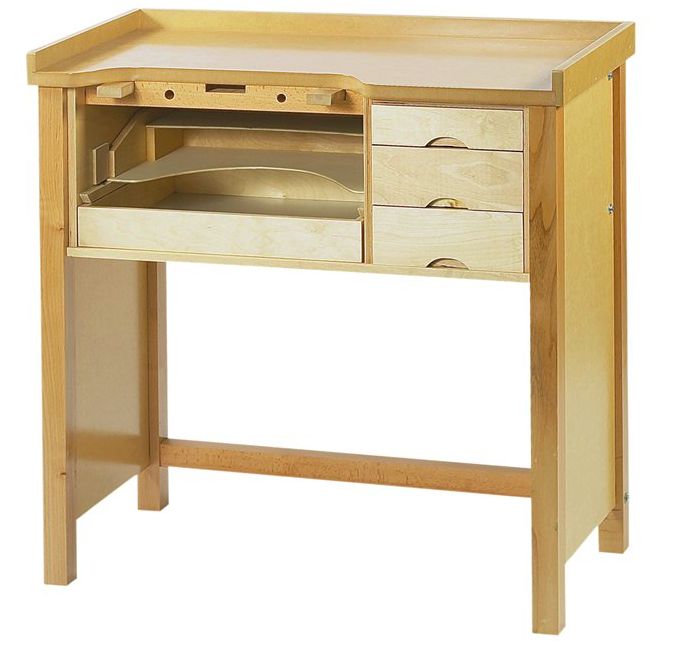
Today, a Rio Grande jeweler’s workbench costs around $420. The hobby jeweler’s market is enormous, with approximately $2.3 billion in total industry sales in 2011. The market has since grown even larger.
If I were to invent something, an affordable jeweler’s workbench would be a great option. I could test it myself and easily reach the necessary distribution channels for selling. While researching the market, I might discover that the demand for these workbenches isn’t widespread and the issue is only experienced by a select few. However, I won’t know for sure unless I test my hypothesis and conduct the research.
Alternatively, you can identify potential ideas by paying attention to others’ frustrations. What do people consistently complain about? What are the desires of your friends? Which products fail to meet people’s expectations?
To learn about people’s complaints, explore forums, utilize social media, and read reviews. Open your mind to all the problems people are discussing.
Step 3: Basic Market Research (Before Investing Money)
Once you’ve found an idea you’d like to pursue, validate it through market research.
According to Patricia Nolan-Brown, author of "Idea to Invention," there are six reasons to conduct market research. Let’s discuss each one and provide additional resources.
1. Determine if the product is already selling and identify competition.
Pay attention to your product name, price range, materials, product claims, packaging, and manufacturer. You can conduct online research or visit stores similar to your target market to see what merchandise they stock.
2. Minimize risk by researching existing products and patents.
Look for similar products and check for patent numbers, but remember that not all patented products are available in stores. Conduct an online search to ensure your idea doesn’t infringe on someone else’s. The U.S. Patent and Trademark Office (USPTO) offers a 39-minute video course and Google’s Patent Search can help with patent research. If you find a similar patent, consult a patent attorney.
3. Gauge interest in your product.
Ask objective individuals if they would buy your product. Consider sampling your ideal audience and have them sign a non-disclosure agreement (NDA) if necessary. If conducting online surveys, avoid divulging too much information about your idea. Instead, ask about pain points related to the problem your product solves.
4. Consider pricing based on competitor products.
Price your product between the lowest and highest priced competitors if they are made from similar materials. You can also calculate your price based on the cost of materials and manufacturing. Keep in mind that your pricing strategy defines, positions, and impacts your business operations and sales.
5. Identify potential licensees.
Licensees manufacture and sell your product, paying you royalties for each sale. Research similar products and find the names of the manufacturers. Compiling a list of potential licensees will be helpful once you’ve patented your idea.
6. Gather essential information for your "sell sheet."
A "sell sheet" is a one-page description of your product, designed to entice licensees, buyers, or trade show attendees. Learn how to write an effective sell sheet to generate interest in your product.
By conducting thorough market research, you can gain valuable insights and increase your chances of success.
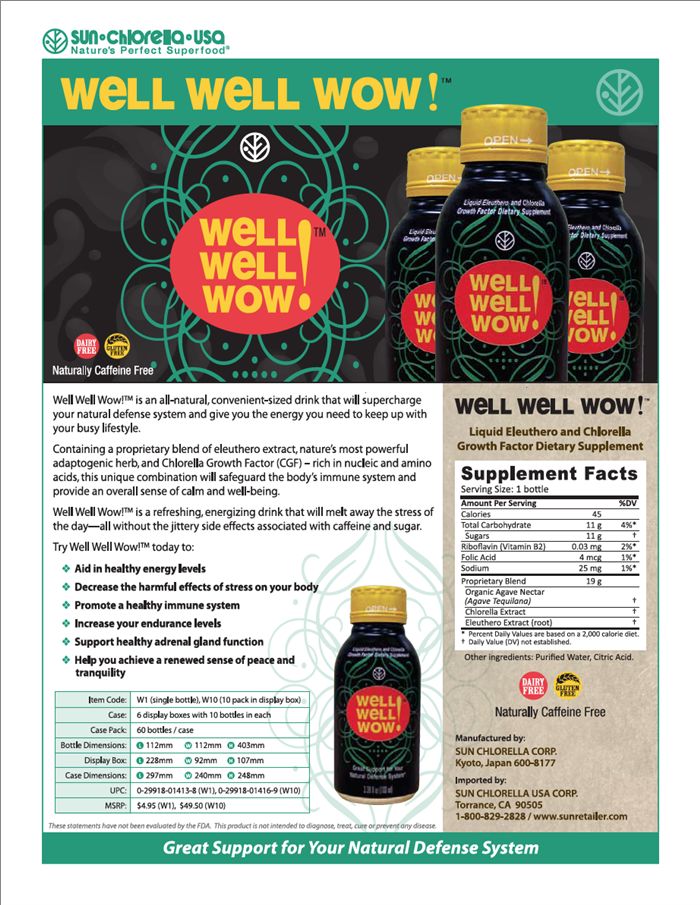
Your sell sheet should include:
- Product name
- Benefit statement
- Visuals (illustrations or photos)
- Demo video (if digital sell sheet)
- List of features
- Contact details
Learn more about crafting a sell sheet on the I’ve Tried That website.
Validating your idea
Before making a prototype, validate your idea through preliminary market research. Use the One-Page Pitch feature in LivePlan by Palo Alto Software or apply the lean planning methodology for a fast and affordable validation process.
Understand how to conduct market research and compile a list of market research resources for your idea validation.
Research your target audience to shape product design, distribution, and marketing strategies.
Focusing solely on the product, instead of the customer, has led many tech startups to failure. According to a study by seed accelerator Blackbox, startups should engage in meaningful customer discovery to define key features for an early prototype. Building a product without customer input prematurely scales it.
In addition to understanding your potential customers, analyze the competition. If your idea is novel, consider indirect competitors.
For instance, LivePlan provides features that simplify financial management for business owners. Before using LivePlan, many of our customers relied on Excel, which required complex formulas. Although Excel is a generalized spreadsheet software, it serves the same purpose as our easy-to-use business dashboard, making it an indirect competitor.
These established competitors can be difficult to overcome, especially if they already have market share, offer more affordable or free solutions.
If after idea validation your concept seems unpromising, don’t lose hope. Many ideas can be improved with fine-tuning.
Step 4: Build a Prototype (and Test Your Idea)
You have a good idea and have validated it. Now it’s time to create a prototype and test it. Congratulations! This is where the real fun begins.
The first thing to consider is your budget. How much can you afford to spend on creating a physical prototype? I’m not referring to just a 3D-printed mockup, but a fully functioning design.
Having a prototype that you can actually test is crucial because, up until this point, you’ve been focused on theory. While that’s fine, it doesn’t allow you to assess other important factors:
- What do your customers think of your product?
- How does it feel? (You may decide to change the material it is made from.)
- Does it meet your intended functionality?
When it comes to prototyping, you need to determine its purpose. Is it for product assessment or to sell to potential clients? Based on its purpose, you can adjust your budget accordingly.
During this initial phase, avoid spending too much money. If possible, create a functional prototype using cardboard or paper. However, if you need a more professional prototype, consider using a 3D printing company or finding an affordable manufacturer. For more information, you can refer to the resource list at the end of the article.
Additionally, it’s important to manufacture in small batches at this stage. After all, you don’t want a warehouse full of prototypes. What if you discover an issue with the first one? You want to be able to make changes easily.
Step 5: Protect your idea
If, during market research and validating your idea, you find no matching patents or products in store, begin the process of getting your idea legally protected.
If you’re still researching and worried about someone stealing your idea, you may consider filing for a provisional patent application (PPA) before filing for a patent. This saves money and allows you to determine if your idea is marketable.
Now, let’s explore some ways to protect your products.
The non-disclosure agreement (NDA)
A non-disclosure agreement (NDA) is a legally-binding mutual agreement between you and whomever you are sharing your idea with. It’s usually advised to have an NDA signed by both parties before sharing your non-patented product.
An attorney can create an NDA for you, or you can find a template online.
Filing for trademark protection
Applying for a trademark (™) protects your idea’s name and prevents others from using it on similar products. Trademark protection can also extend to logos and associated phrases.
If you plan to license your idea, patenting a logo or marketing slogan may not be necessary. The name itself should suffice since the licensee will handle the rest.
To obtain a trademark, an attorney can conduct research to ensure the name, logo, or slogan is available, or you can file for protection yourself using the USPTO website.
After completing your application, you can start using the (™) symbol with your product’s name. However, the symbol does not guarantee full trademark protection. It may take a couple of years for your filed name, logo, or phrase to become a registered trademark (®).
If you discover someone using your name after filing, you can send a "cease and desist" letter through an attorney to avoid legal battles. Likewise, do thorough research when choosing a name to avoid receiving such letters or facing court cases.
The provisional patent application (PPA)
Filing for a provisional patent application (PPA) allows you to secure "patent pending" status, a first-to-file date, and time to test and refine your product. However, a full patent (non-provisional patent or NPA) must be filed within one year.
Filing for a PPA is an affordable way to protect your product. The "first inventor to file" law ensures protection for the first person to file, regardless of who had the idea first.
If the non-provisional patent process takes a long time, filing for a PPA can prevent others from stealing your idea in the meantime. Begin the non-provisional patent process filing as soon as possible, as it may take up to six months to receive full protection.
If you plan to approach licensees or investors, having some form of protection is advantageous.
Prioritize working with a patent attorney when filing for a provisional or non-provisional patent. Be aware that choosing a non-provisional patent from the start restricts your ability to make changes without additional fees. The PPA allows more flexibility for those seeking investors, licensees, or market testing.
The nonprovisional patent (full patent)
A patent grants a property right to the inventor, issued by the USPTO. Patents typically last for about 20 years in the U.S.
The U.S. offers three types of patents: utility patents, design patents, and plant patents.
Most people apply for a utility patent, which covers any new and useful process, machine, article of manufacture, or composition of matter, along with any improvements.
Design patents protect new, original, and ornamental designs for articles of manufacture.
Plant patents cover new, distinct, and asexually reproduced plant varieties.
To file for a full patent, engage a patent attorney. Ensure you carefully review the patent document as you know your product best. Despite the expense, this guarantees 100% protection for your product.
Step 6: Manufacture or license your idea
While everyone can be an inventor and invent things, not everyone is cut out to be an “entrepreneur-inventor.” Some people prefer to invent for royalties, avoiding the manufacturing through marketing and distribution process.
FindLaw suggests analyzing your personality before deciding. If you’re great at sales, can manage people well, can clearly convey your idea, and enjoy taking risks, owning the process yourself may be right for you.
Making this decision could also come down to the cold, hard facts: Do you have the money to manufacture your idea?
I’m going to discuss the pros and cons of each so that you can better decide what type of inventor you are.
Licensing your invention versus manufacturing it
The great thing about licensing your product is that it requires less up-front investment and eliminates most of the risk around bringing an invention to market. By contrast, manufacturing requires tooling and staffing production facilities, which means you’re going to have a costly set-up if you want to make your own products, or have to do a lot of work to find an affordable manufacturer.
Unfortunately, royalties from licensing agreements are often a flat percentage rate, limiting the potential growth in return on a licensed invention. Royalties usually fall between 2 percent and 10 percent of the net profit. This isn’t the same when you manufacture. The economies of scale in manufacturing can allow returns to grow exponentially.
One element of risk in licensing your invention is the possibility of an agreement gone wrong, which could end up in a legal battle and the price to match. Then there are the statistics to consider: One study by Ed Zimmer and Ron Westrum found that only 13 percent of inventors were successful in licensing their invention. If you’re keen to go down this route, don’t let the number put you off—just remember, you may have to DIY if things don’t work out.
That said, this same study found that almost half of the inventors who decided to take control of producing and marketing their invention claimed that they were successful.
If you’re still interested in finding a licensee, remember that you do not have to opt into an exclusive contract with them and you can license to other companies first to assess the feasibility of manufacturing the product on your own later.
However, still take into consideration that companies licensing an invention will have higher expectations for profitability, as the royalties they will pay increase expenses and decrease overall profitability for them.
If you’re still wondering which route is right for you, consider: How complex is your invention?
If your invention is simpler, it could be more feasible to begin manufacturing operations. However, for a more complex invention, especially if some aspect is technically complex, it may make more sense to license the invention to a company that is better-equipped to manage those complexities from a production perspective.
Remember, licensing an invention will require buy-in from the company you license your idea to. You might not find interested parties willing to license the invention from you, at which point manufacturing may be your only choice.
When should you start marketing?
Another question many inventors ask when they’re hovering around the manufacturing stage is: Marketing before, or marketing after?
If you decide to license your invention, you will need to pitch it to prospective licensees, and like any other pitch, you might need to try dozens of opportunities before you get a bite. In this case, you will at least need to have a “sell sheet,” something we discussed above.
However, if you decide to manufacture the invention and sell it yourself, you will need to continuously market your product. This can be a huge expense. If you don’t have much marketing experience, or aren’t particularly interested in learning, you might prefer to go the licensing route.
Resources for inventors
Below are some of the top-rated books, websites, and resources for inventors.
The USPTO is arguably one of the most important. If you know of any others that haven’t been included, let us know in the comments.
Books:
3D Printing companies:
Shapeways: One of the largest online 3D printing services. They can print your products in various materials and assist with design and prototyping. They also have a community and a marketplace.
Makexyz: This company connects you with top-notch 3D printers. You can submit your idea to Makexyz for them to handle or reach out to 3D printers directly.
The MakerBot: A user-friendly printer on the market. If you’re not a CAD whiz, consider using sites like Fiverr or Elance to find product designers.
Manufacturers and distributors
Alibaba: The world’s biggest supplier directory. From this site, you can find international companies to manufacture your product.
ThomasNet: Check their Register of Manufacturers.
Tip: In a saturated market, check the product packaging. Many include a manufacturer’s name, and if not, you can find it online.
Websites:
Edison Nation: The site for evaluating ideas at any stage.
Kickstarter: A platform for bulk manufacturing ideas. Many great ideas originated here. Browse the library to find patterns or set up your Kickstarter profile for increased chances of funding.
U.S. Patent and Trademark Office: The government’s patent office for understanding, searching, registering, and maintaining patents.
Other resources:
Inventor’s Digest: The oldest magazine for inventors. Subscribe on the site or order a 12-month subscription from Amazon. Check out the ABCs of Inventing section for useful tips before starting.
Hello!
I’m Andrew Brooks, a seasoned finance consultant from the USA and the mind behind phonenumber247.com.
My career is built on a foundation of helping individuals and businesses thrive financially in an ever-changing economic landscape. At phonenumber247.com, my aim is to demystify the complex world of finance, providing clear, actionable advice that can help you navigate your financial journey with confidence. Whether it’s personal finance management, investment strategies, or understanding the nuances of market dynamics, I’m here to share insights and tools that can propel you towards your financial goals.
Welcome to my digital space, where every piece of advice is a step closer to financial clarity and success!

